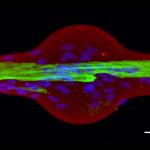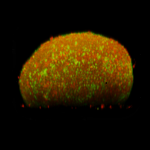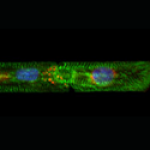CYTOO has developed a first-in-class myotube model by fully maturing human primary myoblasts. Micropatterned myotubes achieve an unprecedented level of striation.
Cellular models
CYTOO solutions can transform conventional cellular models grown as monolayers into a more in vivo like phenotype. Thanks to its know-how on Micropattern technology, CYTOO develops more physiological cellular models, with a higher level of differentiation and maturation, or a 3D organization (spheroids).
CYTOO’s cellular models can be in-licensed should you wish to further develop novel HCA compatible read-outs and assays. Contact us for in-licensing options.
CYTOO offers custom cellular model and cell-based assay development through research contracts. Through our partnerships with the industry and academia, we have also gained expertise in angiogenesis, in working with neural cells (neurite outgrowth…), developed various acini and cyst models, and assisted in micropatterning over 200 different cell types.
We have further developed first-in-class and best-in-class cell-based assays based on our proprietary cellular models:
These assays are available for screening as fee-for-service or for in-licensing.
For more information on our cellular models and Cell-Based Assays, please contact us.
A non exhaustive list of advanced cellular models is displayed below:
CYTOO has created an innovative spheroid cellular model fully compatible with automation and HCS. The functional spheroids are produced and screened from the same plate. Multiplexed read-outs enable to discriminate compound MOAs.
Based on cardio-specific micropatterns, we have reconstituted a more physiological environment and a higher level of maturation of human iPS- derived cardiomyocytes (CDI, Madison, WI, USA). Such micropatterned cardiomyocytes show aligned sarcomeres, a higher level of connexin 43, and synchronized beating.
CYTOO has combined a more hepatocyte-like clone of HepG2 (HepG2-C3A) with specific micropatterns to standardize the formation of bile canaliculi and increase metabolic functions.
CYTOO has developed a first-in-class renal proximal tube model. This model presents in vivo like characteristics such as cell polarization and formation of a true lumen, together with a high level of key tubular transporter genes.





